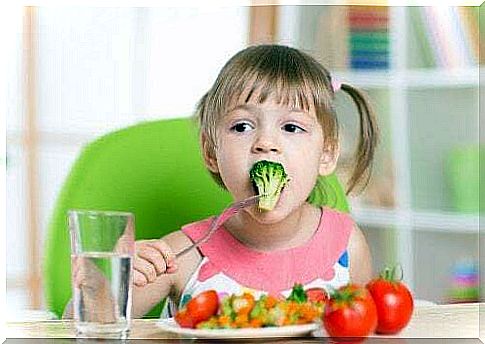How Children’s Food Tastes Develop

Have you ever wondered why children hate broccoli and never refuse a dessert? If your answer is that it depends entirely on genetics, you are wrong. This has been a widespread idea for many years but, after numerous investigations, it has been learned that food tastes are learned. Let’s try to understand together how children’s food tastes develop.
How do children’s food tastes develop?
First of all, you need to know that the taste buds develop during the gestation period, to be exact between 7 and 8 weeks. Therefore, it all begins in the womb. During this time, the baby develops thanks to the nutrients that pass through the umbilical cord and amniotic fluid. These nutrients come from the mother’s diet.
Subsequently, after receiving breastfeeding, the flavors of what the mother eats are also perceived. In this way, the palate gets used to it, so that when we introduce food we tend to prefer foods with a similar taste. In addition, repeated exposure, the social environment and the emotions associated with eating also affect. Culture is also decisive: this is how children’s food tastes develop.

Influence of the type of breastfeeding on the food tastes of children
Although the benefits of breastfeeding are greater than those of formula milk, it is not always possible to do it or maintain it for at least 6 months. However, clinical studies show greater variability in the acceptance of flavors and the ease of trying new foods if you have been breastfed. The diet is also generally healthier, as long as the mother follows it too.
The perception of salty
It develops from 4 months in an innate way. Generally, after 2 years, children show a greater desire for this type of food than adults. There is also a relationship between low birth weight and the consumption of salty foods. But, like all food tastes, it is possible to educate the palate.
Nobody minds the dessert!
There will rarely be a child who refuses dessert – unless little has been offered! This taste has always been associated with well-being and pleasure, as it activates these areas of the brain. Furthermore, it has been seen that, at the slightest contact of children with this flavor, the heart rate and the amount ingested increase. This happens because breast milk is sweet.
In addition, dessert is a flavor associated with holidays and celebrations, which generates a feeling of joy. For this reason, when we reach adulthood, we tend to eat something sweet when we have had a bad day, even if when we overdo it we make things worse. However, the degree of perception varies based on the presence of certain genes. Therefore, the most sensitive will tend to reject it in large quantities. This also affects how children’s food tastes develop.

The refusal of the bitter
The bitter taste was considered a poison in prehistoric times, as it was characteristic of green fruits that were eaten only to survive. Those people who consumed them got sick or died. Hence the innate rejection that could explain why children hate certain vegetables, such as broccoli and Brussels sprouts.
As for the sweet, we have receptors that predispose to a greater sensitivity towards this taste. If you find that your child considers it very intense even if it is minimal, no matter how hard you try to offer it to him, he will always reject it. Conversely, after 10 or more attempts, he will most likely accept it.









